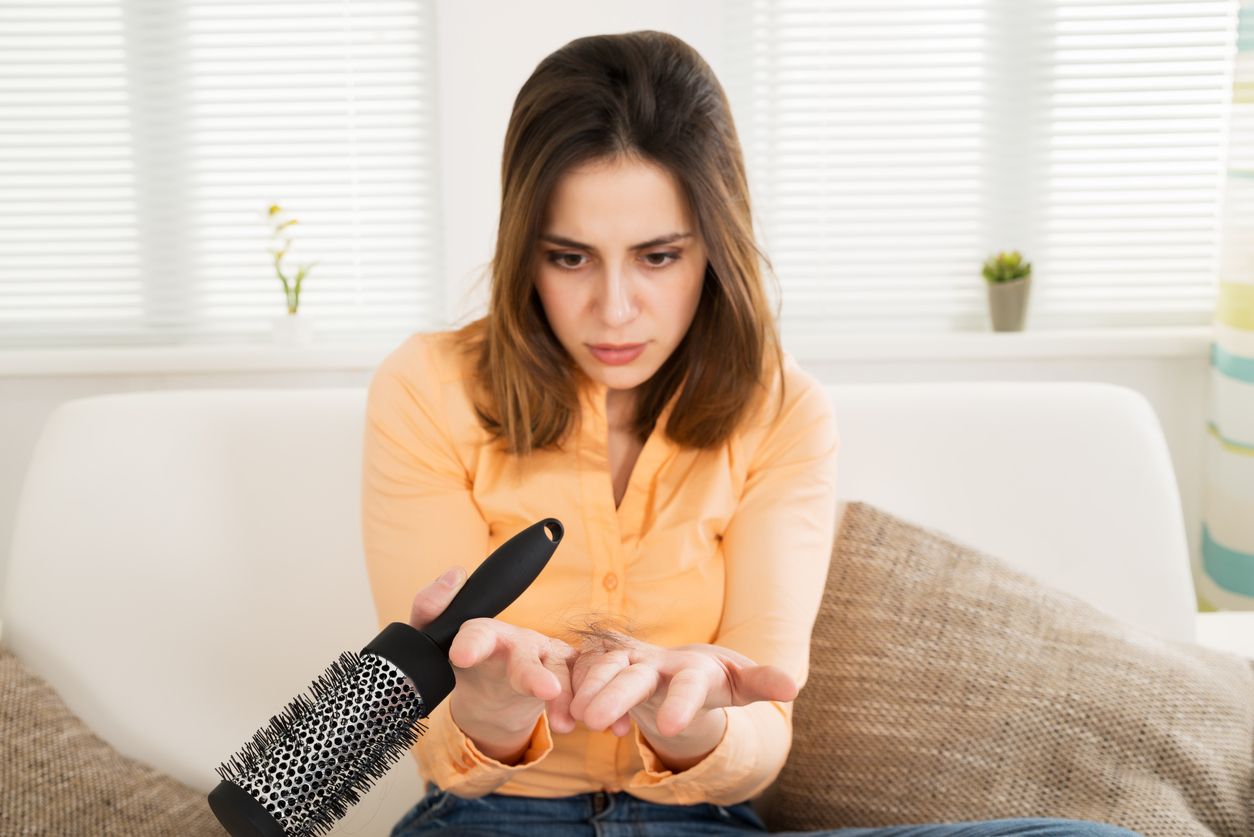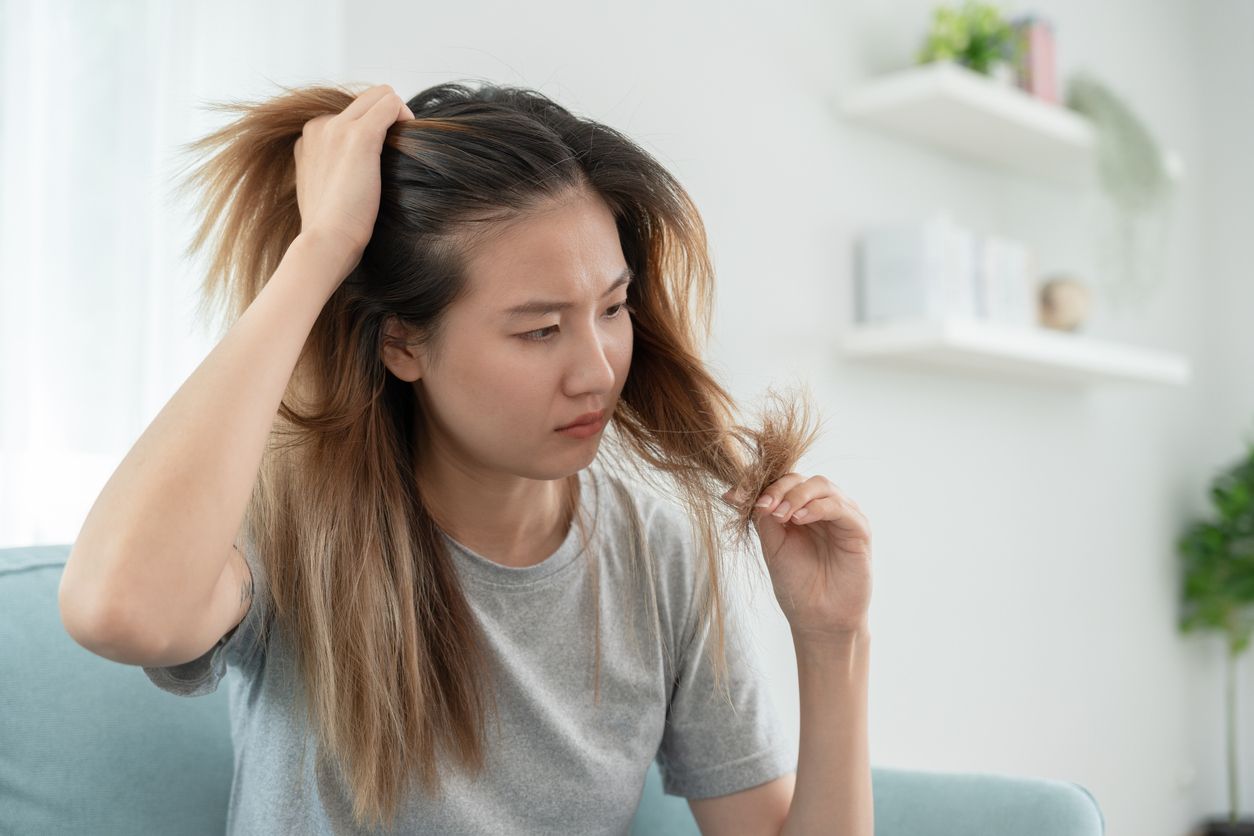- Home
- Trend
- Weight Loss Strategies
- Acne Tips
- Hair Health Information
- Blemish Removal Tips
- Acne Scar Removal Tips
- Muscle Building Techniques
- Intimate Care Tips
- Postpartum Intimate Care
- Eye Bags Wiki
- Tips for Face Slimming
- Secret of Permanent Hair Removal
- Breast Enlargement Tips
- Cure to Snoring
- Marionette Lines
- Skin-Tightening Secrets
Traction alopecia is a common type of hair loss seen in people with long hair—especially women. As the name suggests, it refers to hair loss caused by external pulling forces, significantly increasing the risk of a receding hairline. If you regularly wear tight hairstyles or use hair extensions, it’s time to pay attention—any consistent external tension on the scalp can lead to damaged hair follicles and eventually turn you into a hair loss sufferer! In this article, we’ll explore the 5 most common causes of traction alopecia and share 4 essential ways to relieve scalp stress and protect your follicles—helping you prevent hair loss before it starts.
Identifying the Hairline Killer: 5 Common Causes of Traction Alopecia

Cause 1: Maintaining the Same Hairstyle Long-Term – High Ponytails, Buns, Braids
Constant pulling stresses the scalp, causing inflammation around the hair follicles, which leads to hair thinning around the hairline, temples, and nape of the neck. Hair that's actively growing may be painfully yanked out, disrupting its growth cycle. This can happen at any age—even children who frequently wear tight hairstyles may start developing a visibly thinning hairline or crown at a young age.
Cause 2: Excessive Perming, Dyeing, or Styling Products
Frequent bleaching, coloring, and styling might boost your confidence temporarily, but the chemicals used in hair treatments can severely damage hair shafts, making them weak and prone to breakage. Styling tools like curling irons and flat irons cause heat damage, further burdening the scalp.
Cause 3: Hair Extensions and Hairpieces
The weight of extensions can pull on natural hair, loosening the grip of hair follicles on the roots, which worsens hair fall. Extensions also make scalp cleansing more difficult, increasing the risk of folliculitis if not properly maintained.
Cause 4: Incorrect Brushing Habits
Aggressive brushing or using the wrong type of comb can cause breakage—especially when hair is wet and more fragile. Pulling on tangles while wet can significantly increase hair loss.
Cause 5: Other Harmful Habits
Wearing helmets or hats for long hours is another source of scalp tension. Other underlying issues such as postpartum hair loss or trichotillomania (compulsive hair pulling) can also contribute to or worsen traction alopecia.
3 Stages of Traction Alopecia – Self-Check Your Symptoms
| Stage | Key Symptoms |
|---|---|
| Early | Widening hair part, receding hairline, reduced density at forehead, temples, and neck; red, itchy scalp with small bumps; brittle, thinning hair |
| Mid to Late | Patchy or circular hair loss areas; visible scalp due to follicle shrinkage; smooth bald patches with no new growth |
| Severe | Fully closed follicles unable to regrow hair; may lead to diffuse or full-scale permanent baldness—commonly known as bald spots or baldness |
Spotting Hair Loss Crisis? Here Are 4 Ways to Treat Traction Alopecia

1. Stop All Harmful Hair Habits Immediately
This includes tight hairstyles, long-term hat usage without considering scalp ventilation, overuse of heat styling tools, and behaviors like hair pulling. Opt for loose styles, reduce how often you tie up your hair, and give your scalp breathing room by occasionally removing hats. If you have compulsive habits like trichotillomania, seek alternate coping methods to reduce them.
2. Adopt a Hair & Scalp Care Routine + Improve Your Diet
Switch to gentle shampoos that soothe and hydrate the scalp while promoting healthy circulation through massage. Include foods that support keratin production and nourish the follicles, such as protein, vitamins, and minerals.
3. Try Hair Growth Medication
• Minoxidil: Found in many hair regrowth products and some shampoos.
• Steroid Creams: Help reduce inflammation, rebalance scalp oils, and treat skin conditions.
• Antibiotics: Used to treat folliculitis; oral antibiotics must be taken under medical supervision.
4. Hair Transplant Surgery
For those with severe hair follicle shrinkage and no chance of natural regrowth, hair transplant surgery can relocate healthy follicles from the back of the head to the affected areas. With proper care, the hair growth cycle can restart.
免費體驗
F8 Hair Regrowth Treatment
1 Minute Self-Registration
Date should not be before minimal date
Traction Alopecia Can Be Reversed—Perfect Medical’s F8 Hair Regrowth Treatment Is the Solution!
If you’re overwhelmed by traction alopecia and see no results even after trying hair tonics, we’ve got you covered. Want hair to grow faster than it falls out? Try the Perfect Medical F8 Hair Regrowth Treatment! Completely non-invasive and pain-free, it’s ideal even for those new to aesthetic treatments. Just lie back and relax—your hair will come back stronger with time.
The F8 treatment uses low-level medical-grade soft laser technology that won’t irritate your scalp. It promotes hair regrowth at the root without surgery or needles, enhances the scalp environment, and results in stronger, healthier hair! Whether you're facing traction alopecia, thinning, receding hairline, telogen effluvium, seborrheic hair loss, postpartum shedding, or stress-induced hair fall—you can sign up to experience: Professional Scalp Analysis + F8 Hair Regrowth Treatment. Severe hair loss doesn't have to be permanent—you just haven’t met us yet!
Try Now: Perfect Medical F8 Hair Regrowth Treatment免費體驗
F8 Hair Regrowth Treatment
1 Minute Self-Registration
Date should not be before minimal date
FAQ

Will traction alopecia heal on its own?
If caught early and harmful habits are stopped, the condition can improve. But if no new growth occurs after behavior changes, it might have reached moderate to severe stages, requiring medical treatment.
Is tying a ponytail related to traction alopecia?
Yes. Constantly wearing high ponytails pulls on the scalp and hairline, increasing hair loss risk.
Is hair transplant the only solution for traction alopecia?
No. Hair transplants are effective for areas where follicles are dead, but other non-surgical options can work in milder cases.
Is traction alopecia hereditary?
No. Traction alopecia is caused by physical tension on hair, not genetics. It’s not passed down to the next generation.
Is postpartum hair loss the same as traction alopecia?
Not quite. Postpartum hair loss is hormonal. But tight hairstyles during this sensitive period can trigger or worsen traction alopecia.









